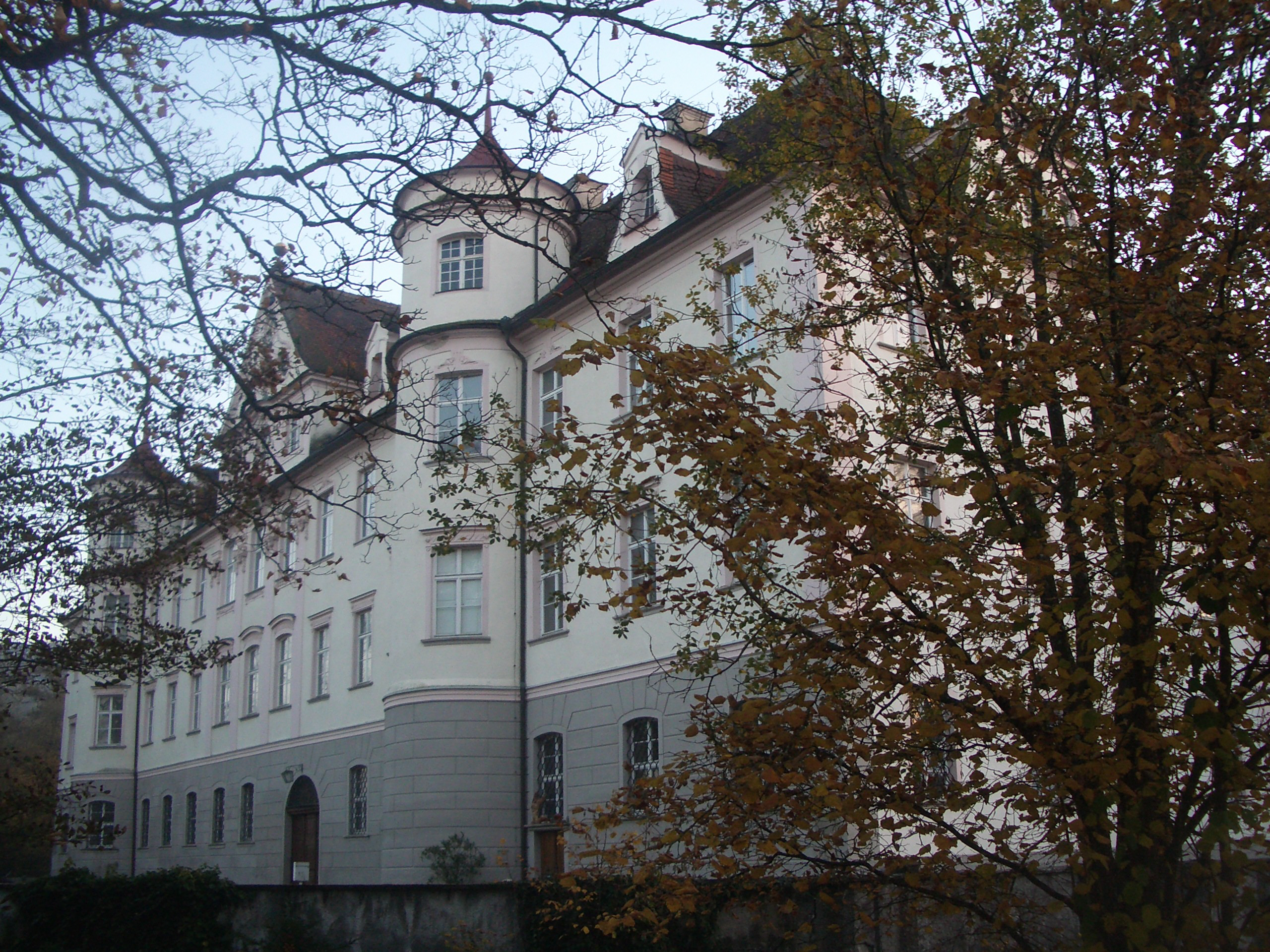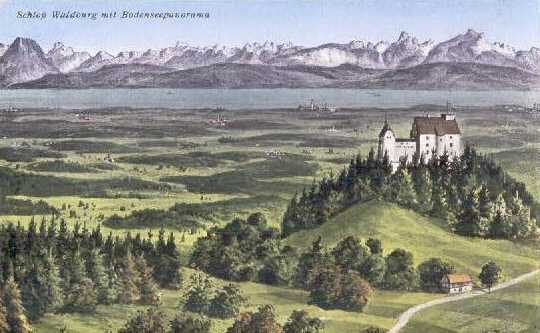|
Waldburg-Wolfegg
Waldburg-Wolfegg was a County ruled by the House of Waldburg, located in southeastern Baden-Württemberg, Germany. Waldburg-Wolfegg was a partition of Waldburg-Wolfegg-Zeil and was repartitioned in 1667, creating Waldburg-Waldsee Waldburg-Waldsee was a County and later Principality within Holy Roman Empire, ruled by the House of Waldburg, located in southeastern Baden-Württemberg, Germany, around Bad Waldsee. Waldburg-Waldsee was a partition of Waldburg-Wolfegg. Wh ..., which annexed Waldburg-Wolfegg in 1798 and became the principality of Waldburg-Wolfegg and Waldsee. Counts of Waldburg-Wolfegg * Maximilian Franz Eusebius, 1667–81 * Ferdinand Louis, 1681–1735 * Joseph Franz, 1735–74 * Ferdinand, 1774–79 * Josef Alois, 1779–91 * Karl Eberhard Wunibald, 1791–98 1589 establishments in the Holy Roman Empire {{Germany-hist-stub ... [...More Info...] [...Related Items...] OR: [Wikipedia] [Google] [Baidu] |
Waldburg-Wolfegg-Zeil
Waldburg-Wolfegg-Zeil was a County ruled by the House of Waldburg, located in southeastern Baden-Württemberg, Germany. Waldburg-Wolfegg-Zeil was a partition of Waldburg and was repartitioned in 1589, to create Waldburg-Waldburg, Waldburg-Wolfegg and Waldburg-Zeil Waldburg-Zeil was a County and later Principality within Holy Roman Empire, ruled by the House of Waldburg, located in southeastern Baden-Württemberg, Germany, located around Schloss Zeil, near Leutkirch im Allgäu. History Waldburg-Zeil w .... States and territories established in 1424 1589 disestablishments {{Germany-hist-stub ... [...More Info...] [...Related Items...] OR: [Wikipedia] [Google] [Baidu] |
Waldburg-Waldsee
Waldburg-Waldsee was a County and later Principality within Holy Roman Empire, ruled by the House of Waldburg, located in southeastern Baden-Württemberg, Germany, around Bad Waldsee. Waldburg-Waldsee was a partition of Waldburg-Wolfegg. When the Wolfegg branch extinguished in 1798, the Waldsee branch inherited Wolfegg. Waldburg-Waldsee was a county prior to 1803, when it was raised to a principality shortly before being mediatised to Württemberg in 1806. The castle of the princes of Waldburg-Waldsee lies in the town of Kißlegg. Rulers of Waldburg-Waldsee The Waldburg-Waldsee are one of five branches of the Waldburg family, the others being Waldburg-Waldburg, Walsdburg-Zei, Waldburg-Wolfeck, and Waldburg-Wurzach. By 1872, Waldburg, Wolfeck, and Waldsee merged into a single Waldburg-Waldsee branch. Zeil and Wurzach merged into a second branch.Wilhelm Obermüller, ''Deutsch-Keltisches, geschichtlichgeographisches Wörterbuch'', Berlin: Denicke's Verlag Link & Reinke, 187 ... [...More Info...] [...Related Items...] OR: [Wikipedia] [Google] [Baidu] |
House Of Waldburg
The House of Waldburg is a princely family of Upper Swabia, founded some time previous to the 12th century; some cadet lineages are comital families. Eberhard von Tanne-Waldburg (? - 1234) was the steward, or ''seneschal'', and adviser of the Staufen dukes of Swabia, and later the adviser of the Emperor Friedrich II. During the anti-Staufen uprising, he and his brother Friedrich von Tanne took opposing sides. Friedrich was killed in 1197 in Montefiascone and Eberhard became the guardian of his nephew, Heinrich, until 1220. Subsequently, he and his nephew administered Swabia during the absence of the emperors. He was entrusted with the imperial regalia that was kept at Waldburg from 1220–1225, hence the name "seneshal," or ''steward''. Eberhard was the founding "father" of the Waldburg lines, and from him the medieval, early modern, and modern lines descend. History Alttrauchburg In 1258 the fief of Alttrauchburg had been given to the stewards of Waldburg, who purchased ... [...More Info...] [...Related Items...] OR: [Wikipedia] [Google] [Baidu] |
Wappen Waldburg
A coat of arms is a heraldic visual design on an escutcheon (i.e., shield), surcoat, or tabard (the latter two being outer garments). The coat of arms on an escutcheon forms the central element of the full heraldic achievement, which in its whole consists of a shield, supporters, a crest, and a motto. A coat of arms is traditionally unique to an individual person, family, state, organization, school or corporation. The term itself of 'coat of arms' describing in modern times just the heraldic design, originates from the description of the entire medieval chainmail 'surcoat' garment used in combat or preparation for the latter. Rolls of arms are collections of many coats of arms, and since the early Modern Age centuries, they have been a source of information for public showing and tracing the membership of a noble family, and therefore its genealogy across time. History Heraldic designs came into general use among European nobility in the 12th century. Systematic, heri ... [...More Info...] [...Related Items...] OR: [Wikipedia] [Google] [Baidu] |
Reichsgraf
Imperial Count (german: Reichsgraf) was a title in the Holy Roman Empire. In the medieval era, it was used exclusively to designate the holder of an imperial county, that is, a fief held directly ( immediately) from the emperor, rather than from a prince who was a vassal of the emperor or of another sovereign, such as a duke or prince-elector. These imperial counts sat on one of the four "benches" of ''Counts'', whereat each exercised a fractional vote in the Imperial Diet until 1806. In the post–Middle Ages era, anyone granted the title of ''Count'' by the emperor in his specific capacity as ruler of the Holy Roman Empire (rather than, e.g. as ruler of Austria, Bohemia, Hungary, the Spanish Netherlands, etc.) became, ''ipso facto'', an "Imperial Count" (''Reichsgraf''), whether he reigned over an immediate county or not. Origins In the Merovingian and Franconian Empire, a ''Graf'' ("Count") was an official who exercised the royal prerogatives in an administrative distr ... [...More Info...] [...Related Items...] OR: [Wikipedia] [Google] [Baidu] |
Baden-Württemberg
Baden-Württemberg (; ), commonly shortened to BW or BaWü, is a German state () in Southwest Germany, east of the Rhine, which forms the southern part of Germany's western border with France. With more than 11.07 million inhabitants across a total area of nearly , it is the third-largest German state by both area (behind Bavaria and Lower Saxony) and population (behind North Rhine-Westphalia and Bavaria). As a federated state, Baden-Württemberg is a partly-sovereign parliamentary republic. The largest city in Baden-Württemberg is the state capital of Stuttgart, followed by Mannheim and Karlsruhe. Other major cities are Freiburg im Breisgau, Heidelberg, Heilbronn, Pforzheim, Reutlingen, Tübingen, and Ulm. What is now Baden-Württemberg was formerly the historical territories of Baden, Prussian Hohenzollern, and Württemberg. Baden-Württemberg became a state of West Germany in April 1952 by the merger of Württemberg-Baden, South Baden, and Württemberg-Hohenzollern. The ... [...More Info...] [...Related Items...] OR: [Wikipedia] [Google] [Baidu] |
Germany
Germany,, officially the Federal Republic of Germany, is a country in Central Europe. It is the second most populous country in Europe after Russia, and the most populous member state of the European Union. Germany is situated between the Baltic and North seas to the north, and the Alps to the south; it covers an area of , with a population of almost 84 million within its 16 constituent states. Germany borders Denmark to the north, Poland and the Czech Republic to the east, Austria and Switzerland to the south, and France, Luxembourg, Belgium, and the Netherlands to the west. The nation's capital and most populous city is Berlin and its financial centre is Frankfurt; the largest urban area is the Ruhr. Various Germanic tribes have inhabited the northern parts of modern Germany since classical antiquity. A region named Germania was documented before AD 100. In 962, the Kingdom of Germany formed the bulk of the Holy Roman Empire. During the 16th ce ... [...More Info...] [...Related Items...] OR: [Wikipedia] [Google] [Baidu] |
Aerial Image Of The Schloss Wolfegg (view From The South)
Aerial may refer to: Music * ''Aerial'' (album), by Kate Bush * ''Aerials'' (song), from the album ''Toxicity'' by System of a Down Bands *Aerial (Canadian band) *Aerial (Scottish band) * Aerial (Swedish band) Performance art *Aerial silk, apparatus used in aerial acrobatics *Aerialist, an acrobat who performs in the air Recreation and sport *Aerial (dance move) *Aerial (skateboarding) *Aerial adventure park, ropes course with a recreational purpose * Aerial cartwheel (or side aerial), gymnastics move performed in acro dance and various martial arts *Aerial skiing, discipline of freestyle skiing *Front aerial, gymnastics move performed in acro dance Technology Antennas *Aerial (radio), a radio ''antenna'' or transducer that transmits or receives electromagnetic waves **Aerial (television), an over-the-air television reception antenna Mechanical *Aerial fire apparatus, for firefighting and rescue *Aerial work platform, for positioning workers Optical *Aerial ... [...More Info...] [...Related Items...] OR: [Wikipedia] [Google] [Baidu] |



